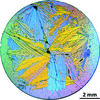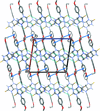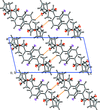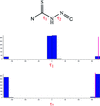issue contents
September 2019 issue

Cover illustration: Imidazolium salts are common building blocks for functional materials and in the synthesis of N-heterocyclic carbenes (NHC) as σ-donor ligands for stable metal complexes. The salt 1,3-bis(4-hydroxyphenyl)-1H-imidazol-3-ium chloride (IOH·Cl), is a new imidazolium salt with a hydroxy functionality. Its synthesis was achieved in high yield via a two-step procedure involving a diazabutadiened precursor followed by ring closure using trimethylchlorosilane and paraformaldehyde. The structure of IOH·Cl consists of a central planar imidazolium ring with out-of-plane phenolic side arms. The hydroxyl functional groups present the possibility of tethering other chemical groups for varied applications, including catalysis, materials and biomedicine. See: Mertens, Parkin & Awuah [Acta Cryst. (2019). E75, 1311-1315].
research communications
















































 journal menu
journal menu









































